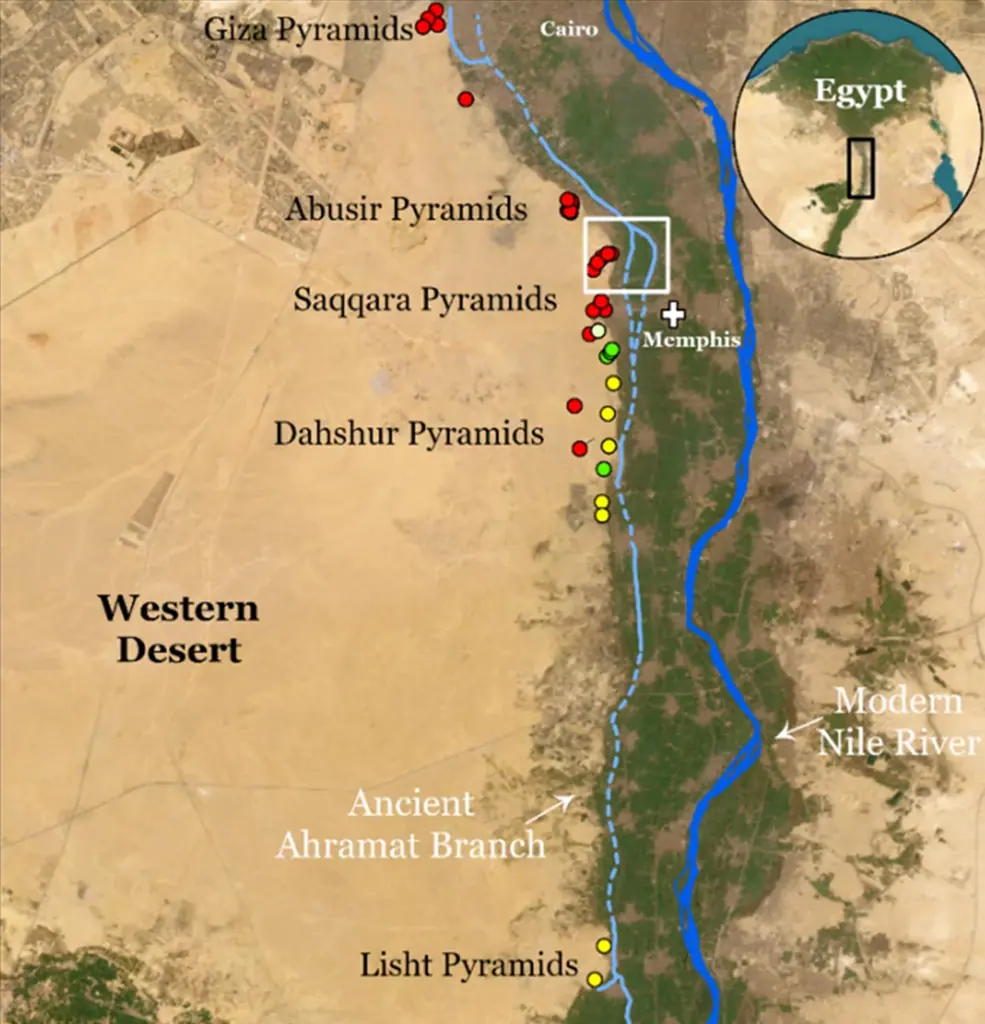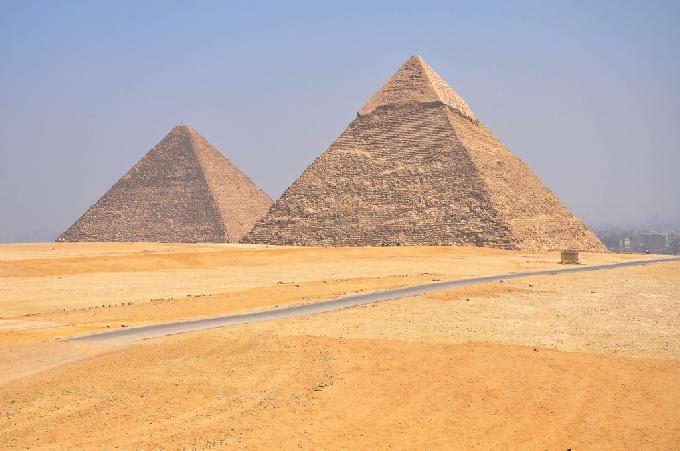Egyptologists have unearthed a significant clue that could rewrite our understanding of pyramid construction. A recently discovered, long-lost branch of the Nile River is believed to have flowed directly alongside numerous pyramids, including the iconic Giza complex. This hidden waterway, buried for millennia beneath desert sands and farmland, sheds light on a longstanding mystery.
Ancient Waterways: The Key to Transporting Colossal Stones
The presence of this ancient river, named the Ahramat Branch (Arabic for “pyramids”), offers a compelling explanation for the location of over 30 pyramids along a seemingly inhospitable stretch of desert. The river would have provided a vital transportation route, enabling workers to efficiently move massive stones as well as supplies to the pyramid construction sites.

Image credits: Eman Ghoneim et al (2024) / Nature.
Connecting the Dots: How the Nile’s Lost Branch Aided Pyramid Building
This discovery goes beyond just logistics. It paints a more vivid picture of the ancient landscape surrounding the pyramids. The Nile River has always been the lifeblood of Egypt, and the Ahramat Branch highlights how intricately linked these structures were to the river itself. The find offers new insights into the ingenuity as well as planning behind pyramid construction and highlights the Egyptians’ deep connection with the Nile.
Researchers are now eager to delve deeper into this exciting revelation. Understanding the Ahramat Branch’s flow patterns as well as its relationship to the Nile could provide invaluable details about how the Egyptians managed large-scale construction projects and navigated their environment. This discovery promises to be a cornerstone in our evolving understanding of this fascinating civilization and its architectural marvels.







